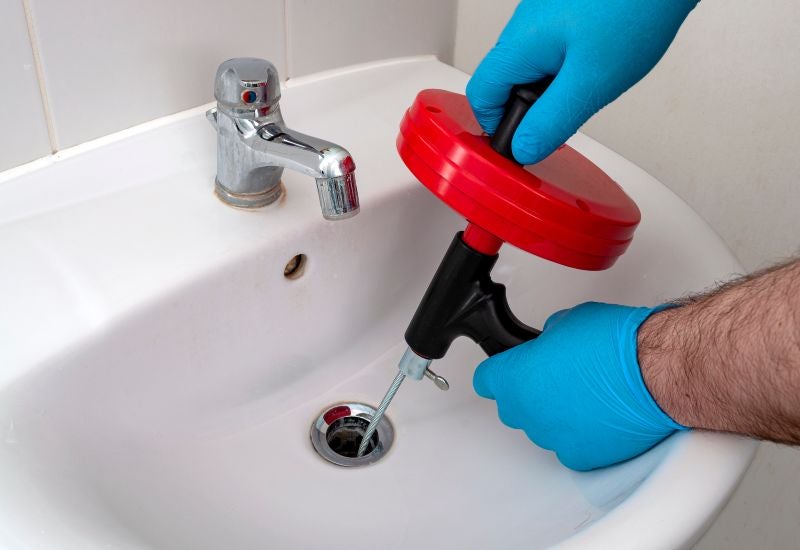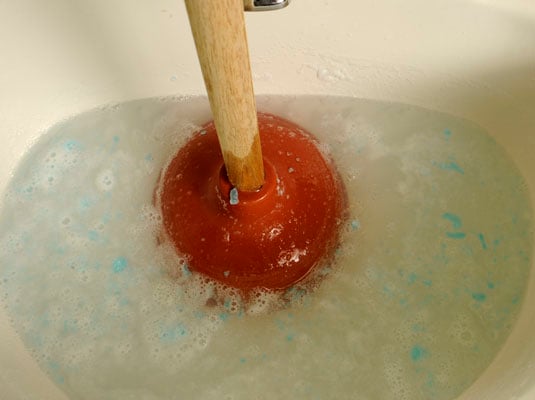This great article which follows on the subject of Here's How to Correctly Use a Toilet Plunger is particularly attention-grabbing. Give it a try and draw your own personal conclusions.

Intro
Correct upkeep of house drains pipes is crucial for preventing clogs and ensuring smooth water circulation. Among the secret tools in every property owner's toolkit is the plunger, alongside numerous drainpipe cleansers made to take on persistent clogs efficiently. This post explores exactly how to utilize plungers and drain cleaners successfully to keep your drains pipes flowing openly.
Section 1: Comprehending Bettors
Types of Plungers
There are numerous sorts of plungers offered, each made for different kinds of drains pipes and obstructs. One of the most common types include cup bettors, flange bettors, and accordion bettors.
Just How Plungers Job
Bettors work on the principle of creating pressure and suction to dislodge clogs. When properly applied over a drain, they create a vacuum cleaner that can take out particles or separate obstructions.
Selecting the Right Plunger
Choosing the best plunger depends upon the kind of drain and the nature of the clog. Cup plungers are ideal for sinks and tubs, while flange bettors are much better fit for bathrooms due to their layout.
Usual Errors with Plungers
Avoiding these blunders makes sure effective plunging: improper seal around the drainpipe, insufficient pressure, and not clearing surrounding debris.
Area 2: Using Plungers Properly
Preparation
Prior to diving, ensure the bettor covers the drain completely and creates a tight seal. Clear any noticeable debris around the drainpipe opening.
Method
Beginning with gentle plunging movements to construct suction. Boost stress gradually, utilizing a consistent rhythm. Repeat as essential till the drainpipe gets rid of.
Repairing Tips
If diving does not function, attempt changing the seal, using petroleum jelly for a much better seal, or using a different kind of plunger.
Section 3: Understanding Drainpipe Cleansers
Kinds Of Drain Cleaning Company
Drain pipes cleaners can be chemical or enzymatic. Chemical cleansers utilize solid chemicals to liquify clogs, while chemical cleaners use all-natural enzymes to break down organic matter.
Just How Drain Cleaning Company Work
Chemical cleansers react with obstructions to dissolve them, while chemical cleaners break down natural products like hair and grease without hurting pipelines.
Security Considerations
Constantly use gloves and eye defense when making use of chemical drain cleansers. Ensure adequate air flow and adhere to maker guidelines meticulously.
Eco-Friendly Alternatives
Take into consideration making use of vinegar and cooking soft drink or enzyme-based cleaners for environmentally friendly choices that are much safer for pipes and the atmosphere.
Section 4: Using Drain Cleaners Effectively
Application Techniques
Put chemical cleansers directly right into the drainpipe opening. Permit them to benefit the recommended time prior to flushing with warm water. Chemical cleaners must rest overnight.
Precautions
Avoid blending various kinds of cleansers, as this can create harmful fumes. Never ever utilize chemical cleaners combined with a plunger, as spilling can occur.
Taking Care Of Stubborn Blockages
For persistent obstructions, take into consideration utilizing a pipes serpent or calling a professional plumbing professional to prevent damage to pipes.
Verdict
In conclusion, understanding exactly how to utilize bettors and drainpipe cleansers effectively is vital for preserving healthy and balanced pipes systems. By selecting the right devices and methods, house owners can deal with minor blockages and avoid major plumbing problems down the line.
5 Steps on How to Use a Plunger Effectively
Creating a Seal: Place the rubber cup of the plunger firmly over the toilet drain hole to create an airtight seal. This seal is crucial to prevent air from escaping and ensure effective plunging.
Plunge Gently: Gently press the plunger down to compress the air inside without causing splashing. This careful action sets the stage for effective unclogging without creating a mess.
Maintaining Pressure: Consistently apply pressure to the plunger while pushing and pulling it up and down. This sustained pressure generates the force needed to dislodge the clog.
Breaking the Clog: Continue plunging until you feel the clog release. Look for the water to start draining, indicating successful removal of the blockage.
Flushing and Cleaning: After clearing the clog, flush the toilet to confirm it's working properly. Clean the plunger with warm, soapy water and disinfect it for future use to maintain hygiene.
Additional Tips on How to Correctly Use a Plunger
if you encounter resistance, add some water to the bowl to create better suction;
check the plunger for any rubber cracks to ensure it's in good condition;
exercise patience and persistence, as certain clogs might need multiple attempts.
Mistakes to Avoid when Using Toilet Plunger
avoid using excessive force, as it may damage the toilet;
don't rush the process; take your time to ensure a proper seal and pressure;
never use a plunger if you've recently used chemical drain cleaners
Conclusion
Mastering the art of how to properly use a plunger is a valuable skill for every homeowner. By employing the correct techniques, you can effectively address clogs and ensure your toilet functions smoothly. Patience, persistence, and proactive in maintaining your plunger's hygiene are key to success in this endeavor.
Armed with these skills and principles, you can confidently handle plumbing issues as they arise, promoting a well-functioning and hygienic home environment.
https://homealliance.com/blogs/how-to-effectively-use-a-plunger-the-ultimate-guide

Application Techniques
Put chemical cleansers directly right into the drainpipe opening. Permit them to benefit the recommended time prior to flushing with warm water. Chemical cleaners must rest overnight.
Precautions
Avoid blending various kinds of cleansers, as this can create harmful fumes. Never ever utilize chemical cleaners combined with a plunger, as spilling can occur.
Taking Care Of Stubborn Blockages
For persistent obstructions, take into consideration utilizing a pipes serpent or calling a professional plumbing professional to prevent damage to pipes.
Verdict
In conclusion, understanding exactly how to utilize bettors and drainpipe cleansers effectively is vital for preserving healthy and balanced pipes systems. By selecting the right devices and methods, house owners can deal with minor blockages and avoid major plumbing problems down the line.
5 Steps on How to Use a Plunger Effectively
Creating a Seal: Place the rubber cup of the plunger firmly over the toilet drain hole to create an airtight seal. This seal is crucial to prevent air from escaping and ensure effective plunging. Plunge Gently: Gently press the plunger down to compress the air inside without causing splashing. This careful action sets the stage for effective unclogging without creating a mess. Maintaining Pressure: Consistently apply pressure to the plunger while pushing and pulling it up and down. This sustained pressure generates the force needed to dislodge the clog. Breaking the Clog: Continue plunging until you feel the clog release. Look for the water to start draining, indicating successful removal of the blockage. Flushing and Cleaning: After clearing the clog, flush the toilet to confirm it's working properly. Clean the plunger with warm, soapy water and disinfect it for future use to maintain hygiene. Additional Tips on How to Correctly Use a Plunger
if you encounter resistance, add some water to the bowl to create better suction; check the plunger for any rubber cracks to ensure it's in good condition; exercise patience and persistence, as certain clogs might need multiple attempts. Mistakes to Avoid when Using Toilet Plunger
avoid using excessive force, as it may damage the toilet; don't rush the process; take your time to ensure a proper seal and pressure; never use a plunger if you've recently used chemical drain cleaners Conclusion
Mastering the art of how to properly use a plunger is a valuable skill for every homeowner. By employing the correct techniques, you can effectively address clogs and ensure your toilet functions smoothly. Patience, persistence, and proactive in maintaining your plunger's hygiene are key to success in this endeavor.
Armed with these skills and principles, you can confidently handle plumbing issues as they arise, promoting a well-functioning and hygienic home environment.
https://homealliance.com/blogs/how-to-effectively-use-a-plunger-the-ultimate-guide

I hope you liked our piece on How to Unclog Your Sink with a Plunger. Thanks so much for taking a few minutes to read our blog. Sharing is good. You never know, you might be doing someone a favor. Thank you for taking the time to read it.
Click Here